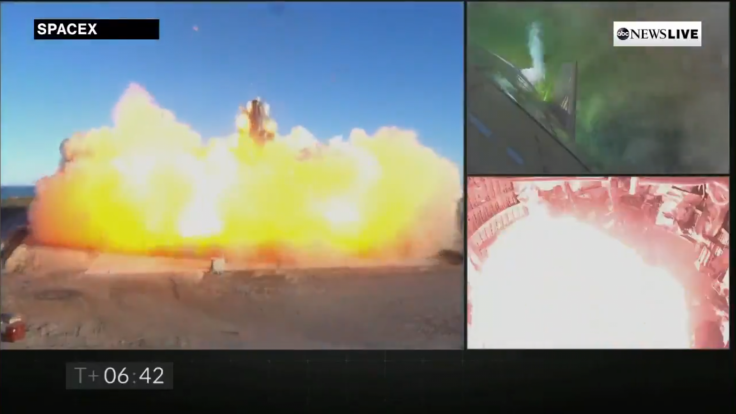Elon Musk's SpaceX violated the terms of its federal license for the Starship spacecraft launch in December 2020, according to a report. The people familiar with the incident said that the first high-altitude test flight of SpaceX's Starship rocket, which launched successfully but ended in a fireball while landing, violated the terms of its Federal Aviation Administration test license.
A formal investigation by FAA was opened, focusing on the explosive landing and license violation by the Space Exploration Technologies Corp, reported The Verge.
The rocket which was destroyed while landing was a 16-story-tall prototype for the heavy-lift launch vehicle, developed by the American aerospace company to carry 100 tons of cargo and humans in future space missions. The stainless-steel Starship is designed to be a versatile and fully reusable spacecraft for deep space missions to the Moon and then Mars.
However, when the "Serial Number 8" Starship prototype exploded, just a few moments later Musk tweeted: "Mars, here we come!!"

Violation of License
According to the report, it was unclear what part of the rocket test violated the license. However, FAA spokesman Steve Kulm told The Verge on Friday (January 29) that the commercial organization will continue to work with SpaceX to evaluate additional information provided by Musk's aerospace company "as part of its application to modify its launch license".
"While we recognize the importance of moving quickly to foster growth and innovation in commercial space, the FAA will not compromise its responsibility to protect public safety," Kulm explained.
He also added that the FAA will approve the modification only if the organization is satisfied that SpaceX has taken the required steps to follow the regulatory requirements.
Stepped-up regulatory scrutiny has played a role in holding up the SN9 Starship test attempt that SpaceX said would take place as early as Monday, February 1.
"Similar to the high-altitude flight test of SN8, SN9 will be powered through ascent by three Raptor engines, each shutting down in sequence prior to the vehicle reaching apogee – approximately 10 km in altitude. SN9 will perform a propellant transition to the internal header tanks, which hold landing propellant, before reorienting itself for reentry and controlled aerodynamic descent," said SpaceX.
However, the license violation issue has escalated tensions between FAA and SpaceX. Musk expressed his frustration regarding the FAA process and took it to Twitter. In a response to a tweet, he wrote: "Unlike its aircraft division, which is fine, the FAA space division has a fundamentally broken regulatory structure."
"Their rules are meant for a handful of expendable launches per year from a few government facilities. Under those rules, humanity will never get to Mars," he added.
Unlike its aircraft division, which is fine, the FAA space division has a fundamentally broken regulatory structure.
— Elon Musk (@elonmusk) January 28, 2021
Their rules are meant for a handful of expendable launches per year from a few government facilities. Under those rules, humanity will never get to Mars.









